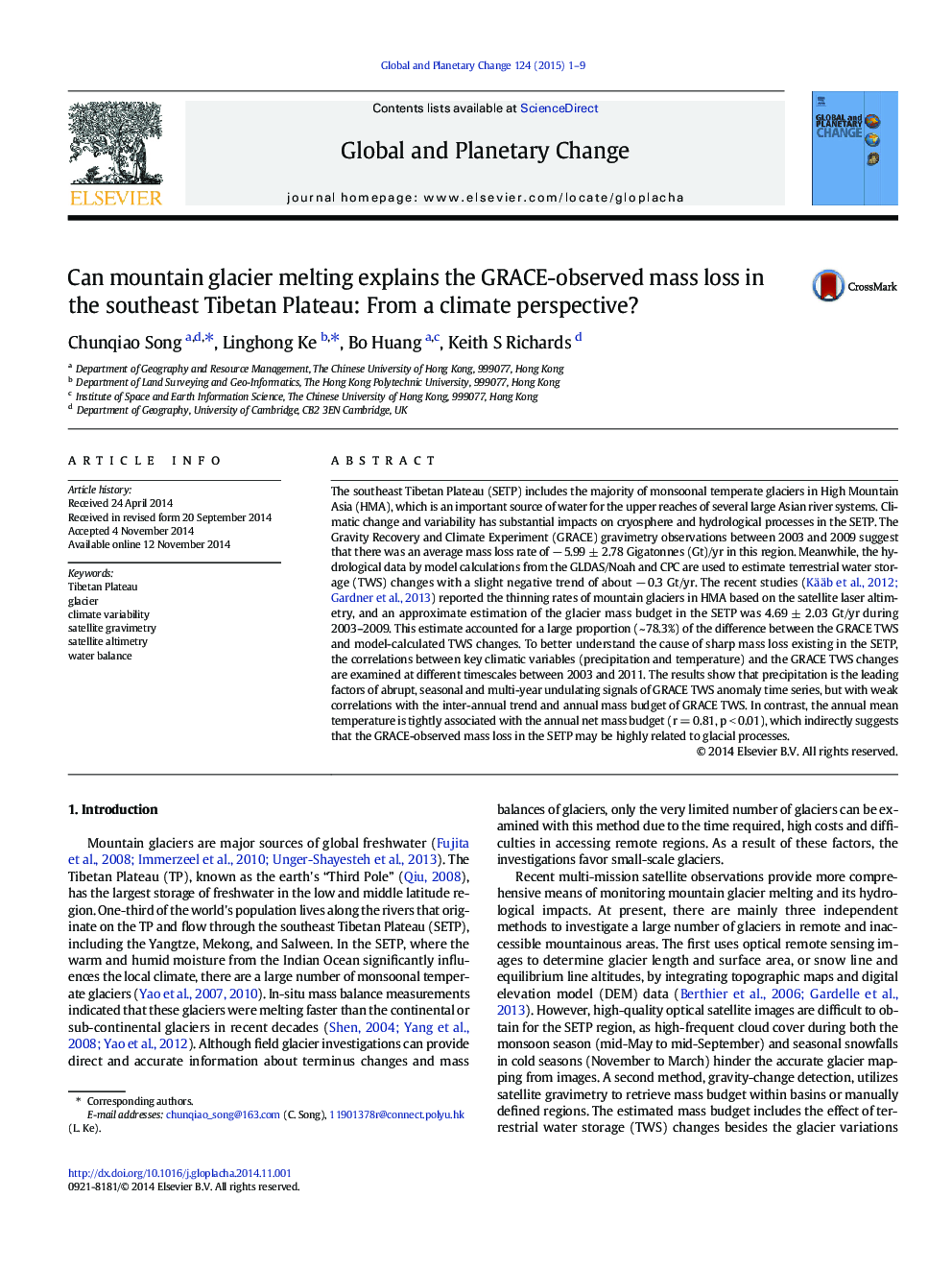| کد مقاله | کد نشریه | سال انتشار | مقاله انگلیسی | نسخه تمام متن |
|---|---|---|---|---|
| 4463384 | 1621658 | 2015 | 9 صفحه PDF | دانلود رایگان |

• The sharp mass loss in the SETP is observed by GRACE.
• Slight changes in terrestrial water storage were derived from hydrological data.
• The stronger link between the mass budgets and temperature than precipitation
The southeast Tibetan Plateau (SETP) includes the majority of monsoonal temperate glaciers in High Mountain Asia (HMA), which is an important source of water for the upper reaches of several large Asian river systems. Climatic change and variability has substantial impacts on cryosphere and hydrological processes in the SETP. The Gravity Recovery and Climate Experiment (GRACE) gravimetry observations between 2003 and 2009 suggest that there was an average mass loss rate of − 5.99 ± 2.78 Gigatonnes (Gt)/yr in this region. Meanwhile, the hydrological data by model calculations from the GLDAS/Noah and CPC are used to estimate terrestrial water storage (TWS) changes with a slight negative trend of about − 0.3 Gt/yr. The recent studies (Kääb et al., 2012 and Gardner et al., 2013) reported the thinning rates of mountain glaciers in HMA based on the satellite laser altimetry, and an approximate estimation of the glacier mass budget in the SETP was 4.69 ± 2.03 Gt/yr during 2003–2009. This estimate accounted for a large proportion (~ 78.3%) of the difference between the GRACE TWS and model-calculated TWS changes. To better understand the cause of sharp mass loss existing in the SETP, the correlations between key climatic variables (precipitation and temperature) and the GRACE TWS changes are examined at different timescales between 2003 and 2011. The results show that precipitation is the leading factors of abrupt, seasonal and multi-year undulating signals of GRACE TWS anomaly time series, but with weak correlations with the inter-annual trend and annual mass budget of GRACE TWS. In contrast, the annual mean temperature is tightly associated with the annual net mass budget (r = 0.81, p < 0.01), which indirectly suggests that the GRACE-observed mass loss in the SETP may be highly related to glacial processes.
Journal: Global and Planetary Change - Volume 124, January 2015, Pages 1–9